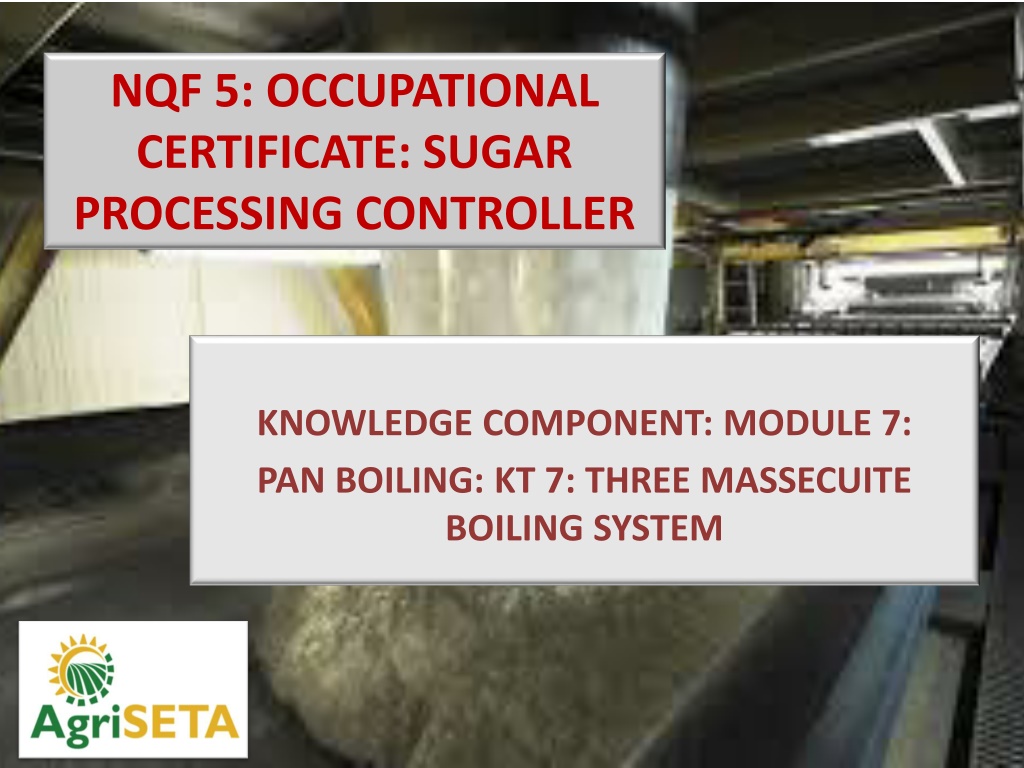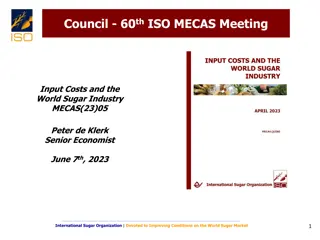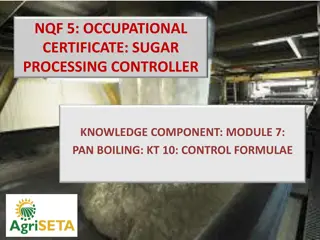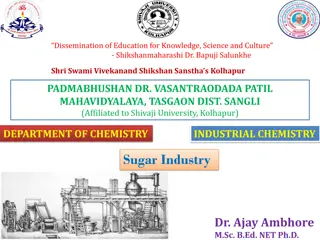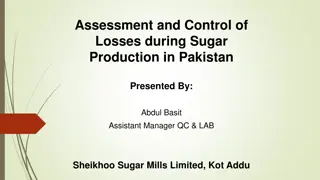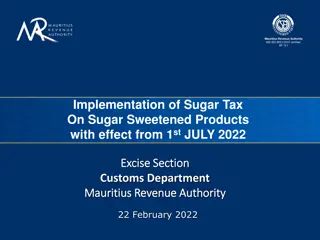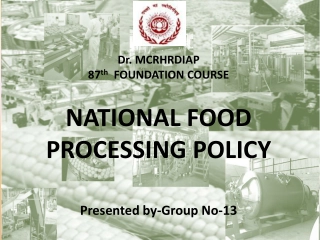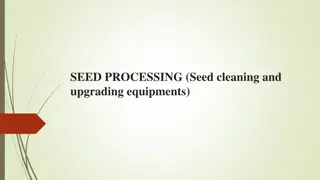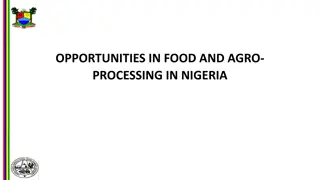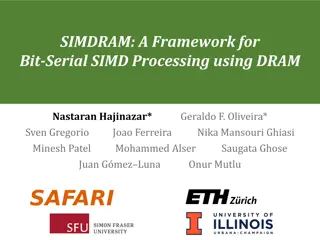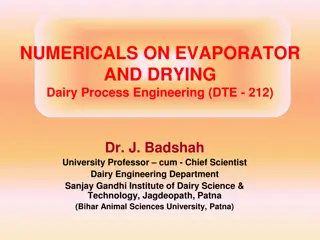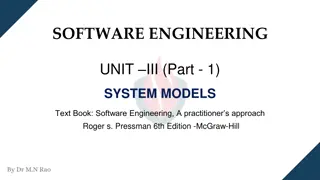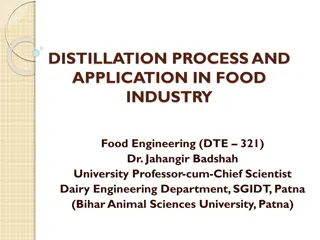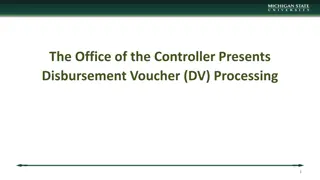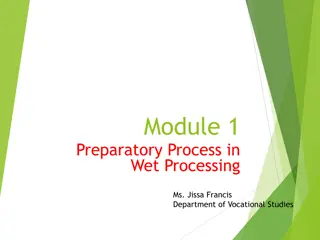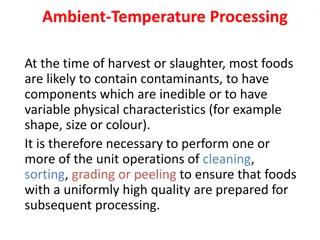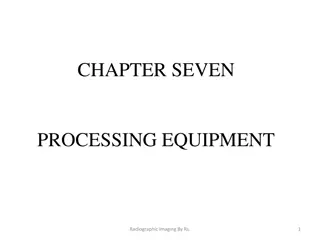Understanding the 3-Massecuite Boiling System in Sugar Processing
The process of pan boiling in sugar processing involves multiple gradations of massecuite to ensure high sugar quality and recovery. By separating crystals from mother liquor and boiling in stages, the 3-massecuite system optimizes sugar production while minimizing losses. Quality sugar production from A-sugar to B-sugar to C-sugar can be achieved through this advanced boiling technique.
Download Presentation

Please find below an Image/Link to download the presentation.
The content on the website is provided AS IS for your information and personal use only. It may not be sold, licensed, or shared on other websites without obtaining consent from the author. Download presentation by click this link. If you encounter any issues during the download, it is possible that the publisher has removed the file from their server.
E N D
Presentation Transcript
NQF 5: OCCUPATIONAL CERTIFICATE: SUGAR PROCESSING CONTROLLER KNOWLEDGE COMPONENT: MODULE 7: PAN BOILING: KT 7: THREE MASSECUITE BOILING SYSTEM
Introduction So far we have restricted our discussion to the operation of individual pans but the operation of the overall pan floor is more complex. The amount of crystal present (crystal content) in a fluid and manageable massecuite must be less than 66%. If we were to attempt to exhaust syrup in one boiling from 80% to 30% purity, we would end up with an unmanageable viscous massecuite of 83 % crystal content. Furthermore, if you have a supersaturated sugar solution with a supersaturation co-efficient of say 1.3 the best that can be done is to reduce the supersaturation co-efficient to 1.0. However, the solution will still contain a large amount of sucrose. To recover more sucrose, the crystals are recovered and water is again evaporated to make the solution supersaturated. As the supersaturated solution then returns to saturation point, more sucrose crystals are recovered.
Introduction (cont.) It is therefore necessary to boil more than one grade of massecuite. When selecting the process to be adopted the following is taken into account: The keeping quality of the sugar The refining quality of the sugar The amount of product recirculation (i.e. remelt) Flexibility and simplicity as a factory operation Steam consumption.
The Aims of Pan Boiling Quality To produce sugar of: high purity, low colour and uniform crystal size Minimize losses The aim is to recover the maximum amount of sugar at the desired quality. To do this, maximum exhaustion be achieve in each boiling. By doing this the quantity of massecuite boiled will be minimised. This is turn will minimize the quantity of steam used and further, will help to reduce the losses which take place in pan boilings.
3-Massecuite Boiling System (cont.) When syrup is boiled in a pan to produce a massecuite the crystals are separated from the mother liquor in a centrifugal to give A-sugar and A- molasses. The A molasses still contains sugar in solution which can be crystallised. Consequently a second boiling is made and the products from centrifuging this B-massecuite are B- sugar and B-molasses. In the same way B-molasses can be boiled in C-pans to give C-sugar and C-molasses (final molasses). This is called the 3-massecuite boiling system.
3-Massecuite Boiling System (cont.) The quality of the sugar produced decreases from A- to B- to C- sugar. The quality of the B- and C-sugar can be increased appreciably by dissolving the sugar in water and recrystallising it. The B- and C-sugars are dissolved in the same tank (remelter) and added to the syrup so that only a single grade of sugar is produced by the factors. The practice of dissolving sugar in water in a factory is often called melting though it is actually dissolving a solute (sugar) in a solvent (water). Most South African sugar factories practice a partial remelt system in which all the C-sugar is melted but part of the B-sugar is used as footing (starting material/seed) for A-pans and only surplus B-sugar is melted. It must be noted that the cost of the recrystallization of B-or C- sugar is appreciable in terms of energy (steam) and extra equipment viz. remelter and pumps, pans and centrifugals.
3-Massecuite Boiling System (cont.) In order to use B-sugar as footing for A-boilings, sugar from the B-centrifugals is mixed with a little water to make a mixture of crystals and mother liquor called B-magma. This mixing in the magma mixer removes the molasses film around the B-sugar crystals. Of course some crystal will be dissolved in making the magma. The magma is pumped to a stirred tank on the pan floor (the magma receiver) and, when required, drawn by vacuum into an A-pan so that the top tube plate of the calandria is covered. Boiling of the pan is started and fed with syrup. The resulting sugar crystals consist of a nucleus of B-sugar surrounded by a layer of A-crystal. Magma footing thus starts the A-boiling with relatively large (100 to 200 m) B-sugar crystals.
3-Massecuite Boiling System (cont.) After the B-magma footing has been pulled into the pan to cover the calandria, the magma is washed with water to dissolve the smaller crystals. This method of creating uniform crystals is successful because the dissolution rate of small sucrose crystals is greater than that of larger sucrose crystals. In addition, broken sucrose crystals grow on their broken surfaces (faces) so that broken crystals repair themselves. The results are crystals of similar size and uniform shape.
3-Massecuite Boiling System (cont.) This system produces a good quality A sugar which is suitable for export. The quantities of massecuite produced by this system in volume per ton of brix in mixed juice are: A - Massecuite -1.08m /ton brix in mixed juice B - Massecuite -1.04m /ton brix in mixed juice C - Massecuite -1.25m /ton brix in mixed juice B- and C-massecuite are started by slurry seeding (graining). At the start of the season where no B-sugar is available the A-pans can also be started with slurry seeding.
3-Massecuite Boiling System (cont.) One other aspect to be considered is pan graining. It has been found by experience that a purity of about 72 is ideal for graining a pan. At higher purities a less regular grain is formed while at lower purities the rate of growth is much slower. Many factories start B-boilings by slurry seeding A-molasses which often has a purity about 70 - 72 but if the purity is say 62, syrup will be added to bring the purity up to the desired level. C-boiling is started by slurry seeding a mixture of A- and B-molasses of 70 - 72% purity. When it is desired to mix two liquors to achieve a particular purity of the mixture the quantities of each required can be calculated.
Summarisation of 3-Massecuite Boiling C-massecuite (52% purity) is produced by slurry seeding a mixture (graining charge) of A-molasses and B-molasses and thereafter the pan is fed on B-molasses. This produces C-sugar (81% purity) and final molasses (36%). However, if the C-massecuite purity were to be, say, 45 because the B-molasses purity was very low it would be necessary to feed the C-seed on A-molasses initially and then change over to B-molasses in order to obtain the desired C-massecuite purity. If the C-massecuite purity were too low the crystal content would be too low and exhaustion would be lower than it should be. C-massecuite purity is usually in the range of 52 - 56.
Summarisation of 3-Massecuite Boiling (cont.) The C-sugar is melted with the excess B magma and the melt (87% purity) is returned to syrup. B-massecuite (69% purity) is produced by slurry seeding A- molasses to produce B-sugar. Some B-sugar is mixed with water and made into a magma (92% purity). B-molasses (47% purity) is produced. A-massecuite (87% purity) is produced from the B-magma footing and syrup. This A-massecuite produces A-sugar (99% purity) and A-molasses (69% purity). If the syrup input contains 100 parts of sucrose, approximately 90 parts will be found in sugar and 10 parts in final molasses.
Summarisation of 3-Massecuite Boiling (cont.) The graphs below show the variations of crystallization rate, sugar purity, viscosity and sucrose removal for the 3 boiling stages.
Special Circumstances If the B-molasses purity is low, A-molasses will be used as footing for a C-boiling. The C-pan is then fed on B-molasses. In the event of the B-molasses purity being very low, A-molasses is still used as footing for the C-boiling, but C-pan is then fed alternately on A- and B-molasses.
Pan Flow Data The following diagram shows overall pan flow data:
Pan Flow Data (cont.) Some massecuite and molasses purities: Purity 83.5 83.5 65.1 66.6 45.2 53.8 34.0 Brix 65 95.8 78 94.8 78 96.6 80 Boiling Time Syrup A-massecuite A-molasses B-massecuite B-molasses C-massecuite C-molasses 3-4 hours 4-6 hours 8-10 hours
Crystal Size Crystal size influences the exhaustion of the mother liquor as well as the curing of the massecuite and the formation of false grain. There are both advantages and disadvantages of big and small crystal. The ideal crystal size is very seldom achieved and the crystal size that is boiled is a compromise. A big grain (0.65 - 0.75mm) cures easily in the centrifugal but false grain forms easily due to the limited crystal surface area. A small grain does not cure very well, but because there is more crystal surface area, false grain doesn t form easily.
Crystal Size (cont.) The false grain appears when the supersaturation is high and there is not enough crystal surface area for the sucrose to deposit itself on. The false grain is usually lost through the centrifugal screen with the molasses. This has the effect of raising the molasses purity. If the false grain is of a grain size that does not go between the centrifugal screen it will block the passages between the larger crystals and poor curing of the massecuite will result. This is more noticeable in batch machines.
Crystal Size (cont.) The target grain sizes are: V.H.P. sugar is 0.65 - 0.77mm B sugar is 0.35mm C sugar is 0.15mm
Types of Crystal False grain False grain are small that formed spontaneously during the graining process of existing crystal. Mixed grain Mixed grain is a mixture of crystals of different sizes caused by false grain that is not removed but is allowed to grow. The following can result in mixed grain: A too high supersaturation coefficient after seeding that allows nucleation to occur. Adding slurry too late after grain has formed on its own (spontaneous nucleation). Grain present in the feed.
Types of Crystal (cont.) Conglomerates Conglomerates are three or more crystals stuck together. This happens mostly with high purities. They are caused by a high SSC immediately after seeding. Conglomerates are very problematic as they trap mother liquor and do not dry easily. Furthermore, washing in the centrifugal cannot remove this trapped mother liquor. Rolled grain Rolled grain is formed when one crystal grows through the centre of another. This happens very rarely.
Types of Crystal (cont.) Elongated crystal: needle grain Needle grain is the term given to elongated grain. Elongation DOES NOT occur because the crystal is growing faster along axis, but because the crystal is not growing along the other axes.
Types of Crystal (cont.) Elongated crystal: needle grain (cont.) The reason for this aberration is as follows: Due to the regular packing of sucrose molecules into the crystal, different faces of the crystal accommodate different impurities. The faces that don t grow have an affinity for tri- saccharides that are attracted and adhere to the faces preventing further sucrose molecules from crystallizing onto this surface. Crystal elongation causes a reduced rate of crystallization. The elongated crystals are very fragile - they break and go through the centrifugal screen resulting in sucrose losses to the molasses.
Types of Crystal (cont.) Elongated crystal: needle grain (cont.) The tri-saccharides which interfere with crystal formation are substituted sucroses. Kestoses: These are sucrose substituted with fructose to yield G-F-F or F-G-F Theanderose: These are sucrose substituted with glucose to yield G-G-F. Needle grain makes boiling difficult and because of the limited surface area causes false grain formation. It also makes it difficult to exhaust the molasses as on curing it can go through the centrifugal screen causing high molasses purities.
Types of Crystal (cont.) Soft grain Soft grain is formed in the pan during boiling. The corners of the crystal are rounded off due to: Poor circulation Low vacuum (relatively high absolute pressure) and resultant low supersaturation coefficient. High boiling level which reduces circulation. Soft grain can be hardened by improving the circulation. Soft grain crumbles in centrifugals causing dust and reducing the yield as fragments end up in the molasses causing a purity rise.
Viscosity Viscosity is the resistance to flow. Viscosity can affect A and B -massecuites but will have more of an effect on C -massecuites. Viscosity in massecuites is caused by a high non-pol content (mainly waxes and gums). This usually happens when the cane is stale and sucrose deterioration has taken place. In certain cases raising purities can help overcome the viscosity problem but this does not help the exhaustion of the massecuite.
Viscosity (cont.) When viscosity problems are encountered the following should be remembered Extra care is needed when seeding as viscosity will affect the feel of the slurry addition point. Slow down the boiling by using movement water. Viscosity slows down the diffusion rate, so by slowing down the boiling there will be more time for the sucrose molecules to move across to the crystals. Do not reduce the steam as this will reduce the temperature which will increase the viscosity. Boiling at a slightly higher temperature will reduce viscosity. This temperature must not be too high as false grain will form when the massecuite is cooled before striking. Chemicals can be added to reduce the viscosity
Massecuite Brix at Strike The brix of the massecuite at strike is governed by: Pan discharge door size and design Pan gutters Crystallizer design Massecuite pumps Maximum exhaustion of massecuites is only possible with high brixes. High brixes also save time and fuel as less steam is needed in the later stages of boiling where the efficiency is low. Low massecuite brixes could mean that up to 30% more massecuite would have to be boiled.
Massecuite Brix at Strike (cont.) Brix of strikes encountered in a raw sugar factory: A strike = 90 - 94 Bx B strike = 92 - 97 Bx C strike = 95 - 99 Bx Brix of syrup, and A and B molasses is between 55 and 70 Brix.
Some Pan Floor Data BOILING GRADE B-Massecuite Refined 99.9 99.6 92 60 55 0.3 A-massecuite 86 66 93 68 55 20 C-massecuite 54 32 97 60 31 22 Massecuite purity Molasses purity Masssecuite brix Exhaustion Crystal content Purity drop 70 45 95 65 43 25
Effect of Massecuite Brix on Quantity of Massecuite High less Less High Less Less High Less Good A Massecuite brix A Molasses B Massecuite B Massecuite brix B Molasses C Massecuite C Massecuite brix C Molasses Exhaustion low more more low more more low more bad
